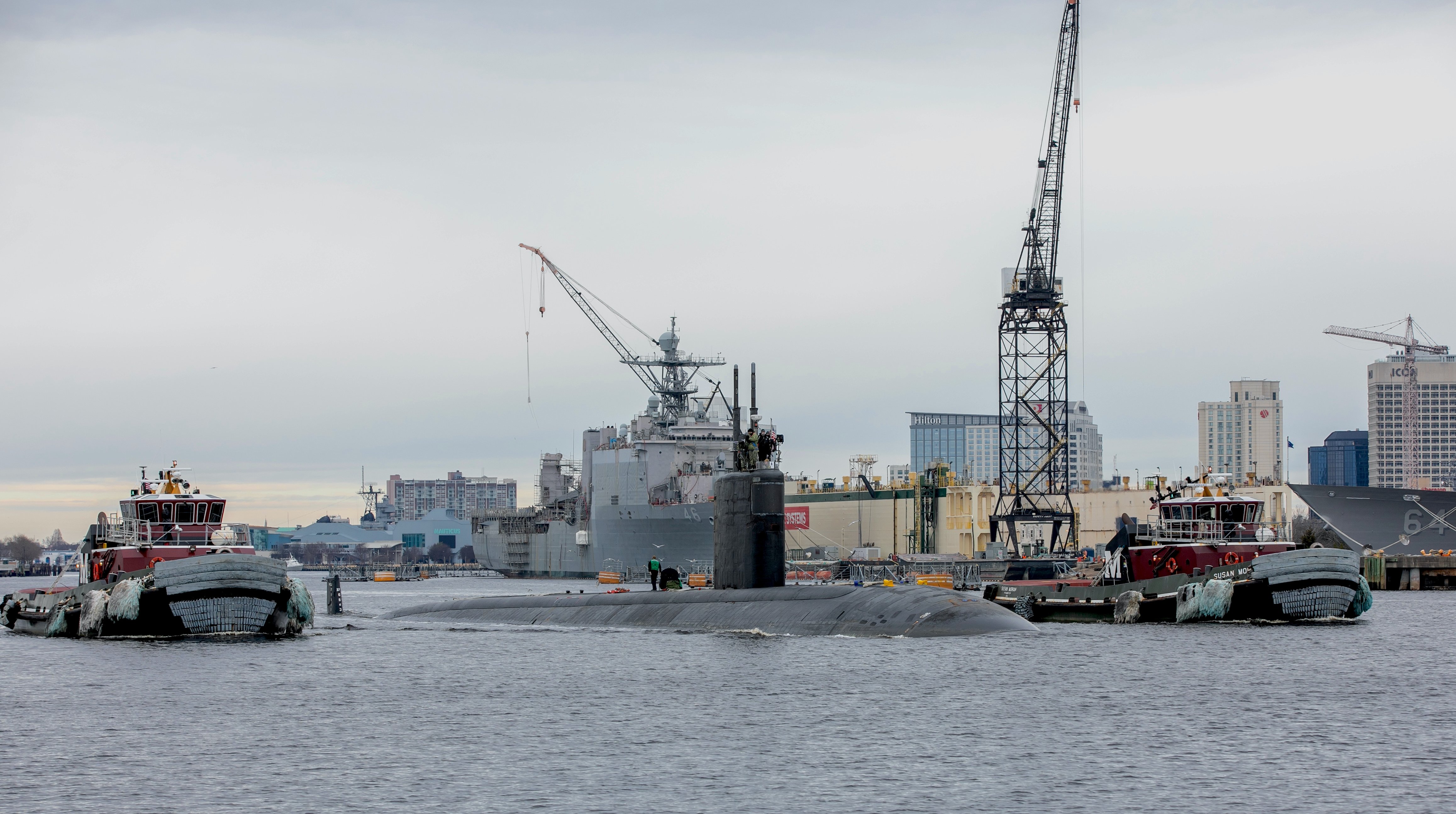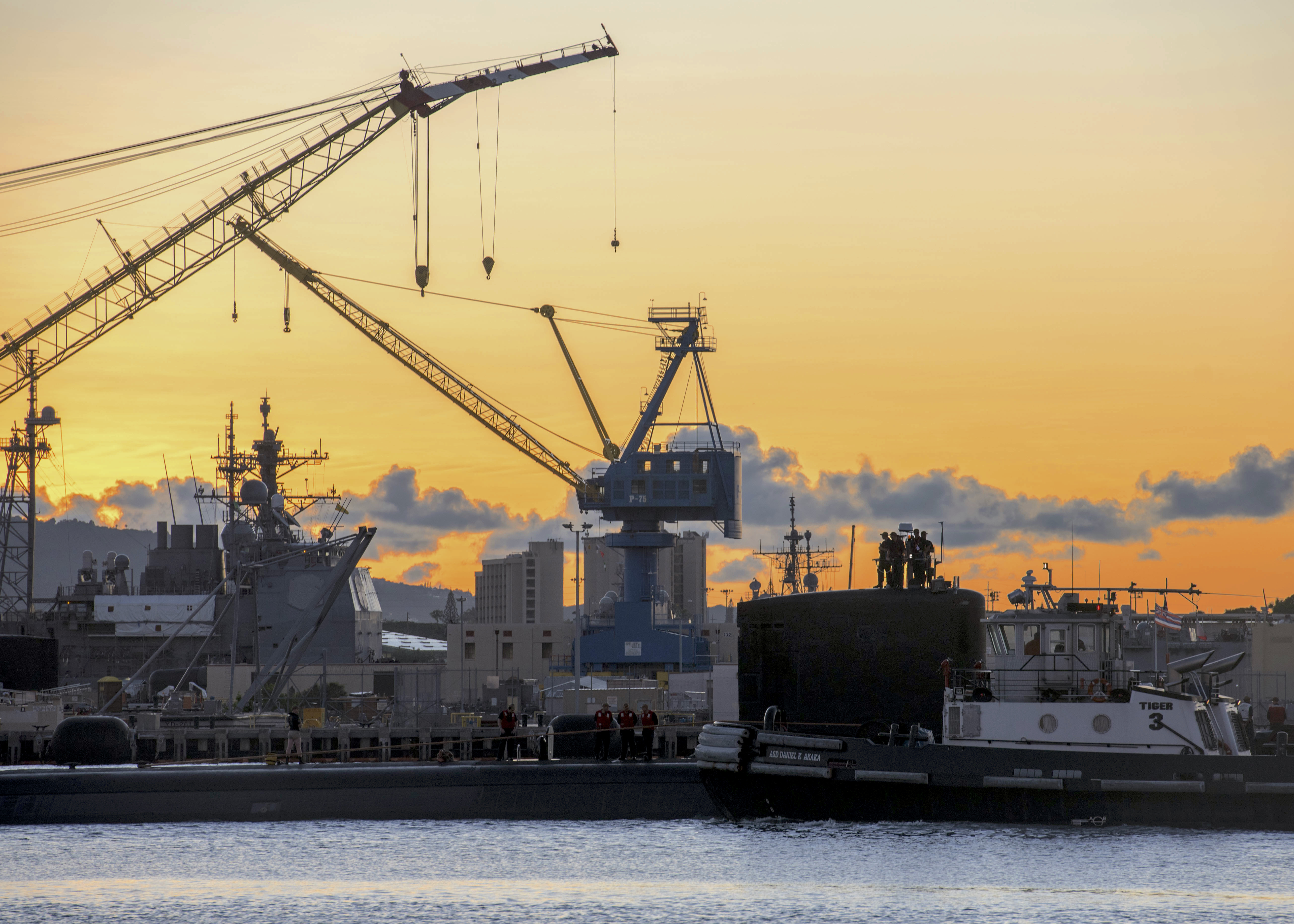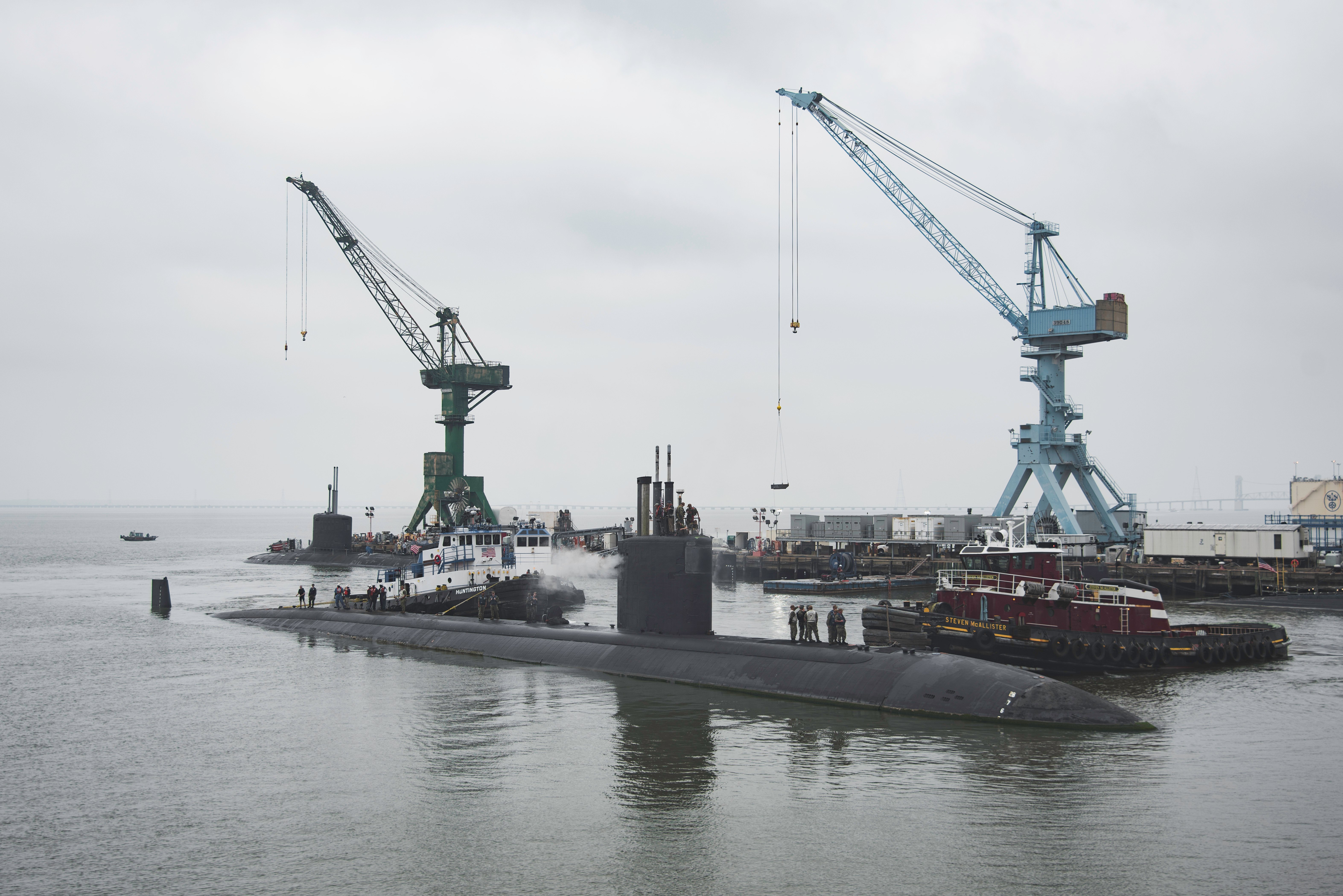
The Navy still has major challenges in digging out of its longstanding submarine maintenance backlog even after growing the workforce at the public shipyards, according to a Congressional Budget Office report.
In a report about submarine maintenance released on Thursday, the CBO found that the Navy still faces a backlog after farming out some maintenance on its attack submarines to private yards, adding personnel to the workforce and seeking process improvements at the public yards.
“Despite the increased number of shipyard workers and the anticipated improvements in productivity, CBO projects that the demand for maintenance over the next few decades will exceed the supply of labor in most years,” the report reads.
“That is because the Navy’s submarines require more days of labor for overhauls than the Navy has planned. As a result, the shipyards will not be able to complete future overhauls on schedule,” it continues. “The 2020–2021 coronavirus pandemic has caused additional delays because it has affected productivity at the shipyards; CBO projects a 5 percent decrease in shipyard productivity in 2020 and 2021 as a result.”
The service for years emphasized its goal of having 36,100 personnel working across its four public yards, which perform maintenance on the Navy’s nuclear-powered vessels, as a way to address its maintenance woes. According to a Fiscal Year 2020 report from Naval Sea Systems Command about the service’s maintenance plans, the Navy reached this objective in FY 2019.
But according to CBO, the Navy may need to consider growing the workforce once again to cut down the maintenance backlog that continues to plague the service.
“CBO projects that the Navy will experience maintenance delays throughout the next 30 years because the demand for labor will exceed the shipyards’ supply of it in 25 of the next 30 years,” the report reads. “CBO projects a 4.6 percent annual shortage in labor, on average—that is, the Navy will need 295,000 more days of labor than the shipyards can supply. That amount is roughly equivalent to falling behind each year by the number of days of labor required to complete an [extended docking selected restricted availability] for a Virginia class submarine.”
CBO cited two reasons for the continued maintenance delays in the public yards: there are not an adequate number of shipyard workers to conduct the maintenance work the yards are tasked with, and the work required during each maintenance overhaul on the nuclear-powered ships has grown.

“Those factors have increased the number of days nuclear ships spend in the shipyard and the number of days of labor that are required to complete their overhauls,” according to the report. “Overhauls have exceeded the number of days of labor scheduled for overhauls by 13 percent to 26 percent, depending on the ship’s class.”
Responding to the report, NAVSEA commander Vice Adm. Bill Galinis said the Navy welcomes ideas on how to address the maintenance backlog.
“Naval Sea Systems Command’s top mission priority is delivering combat power to the fleet through the on-time delivery of combat-ready ships, submarines, and aircraft carriers,” Galinis said in a statement to USNI News. “We appreciate any thoughtful suggestion that helps us enable this goal.”
While the report does not provide suggestions, the CBO included four possible ways the Navy could address the logjam. The first is for the service to do a better job of how it predicts maintenance schedules and then ship deployments.
“Option 1 would not speed the completion of maintenance but would lessen the impact of delays by enabling operating forces to better plan deployments around maintenance,” CBO writes. “The operating forces have goals for the number of attack and ballistic submarines to be deployed at all times. Those deployment goals could be prioritized and adjusted further in advance if the actual timing and duration of maintenance conformed more closely to deployment schedules.”
To address the issue with maintenance planning, NAVSEA is evaluating how it could use its Perform to Plan (P2P) initiative – which utilizes data to determine the best approaches to planning availabilities – for submarine and aircraft carrier maintenance.
The second possibility is to grow the number of personnel in the public yards. While the Navy’s long-stated goal was 36,100 shipyard workers, CBO estimates that the service now has approximately 37,000 employees working at the four public yards and notes the service could up that number to 39,500 to tackle the delays.
Meanwhile, the third route would see the Navy farming out some of the work to the private shipyards, something the service has already started to do with the Los Angeles-class attack submarines.

“Options 2 and 3 would add capacity so that the anticipated demand for maintenance would be equal to capacity, on average, over the next 30 years,” according to CBO. “Either option would cost about the same amount, CBO estimates. The only difference between them is whether the work would be performed in public or private shipyards.”
The Navy is currently assessing whether it can speed up the timeframe for its Shipyard Infrastructure Optimization Plan – a proposal to revitalize the infrastructure in the public shipyards – amid concerns from lawmakers that the original 20-year timeline is too long. House Armed Services seapower and projection forces subcommittee ranking member Rep. Rob Wittman (R-Va.) has argued the service should opt to move some submarine maintenance to the private yards so the Navy can properly balance recapitalizing the public yards’ aging infrastructure with the service’s maintenance responsibilities. Meanwhile, Galinis recently told lawmakers that the buildup of the submarine fleet means the Navy will likely need to utilize the private yards for submarine maintenance in the future.
The last solution is for the Navy to decrease its number of nuclear-powered ships, a path the service is unlikely to take as it pursues a larger fleet.
“Option 4 would reduce demand by adjusting the size of the fleet to match the Navy’s maintenance capacity. That could be accomplished by retiring older submarines ahead of the current schedule or by purchasing fewer new submarines. The magnitude of savings would depend on how the option was implemented,” the report says.
“Savings in maintenance or procurement would be offset, in part, by increases in the costs of disposing of retired ships,” it continues. “Although the submarine fleet would be smaller, the same number of submarines might be available in peacetime because fewer submarines would be awaiting maintenance. However, the Navy’s ability to surge its submarine force during wartime would be reduced.”
The costs associated with tackling the maintenance backlog would vary greatly, based on which course of action the Navy pursues.

“Option 1 should have a very small cost and could benefit the operational fleet’s planning. Increasing capacity under Options 2 and 3 would cost about $275 million per year,” the report reads.
“Option 4 could save between $1.6 billion and $16 billion in procurement costs over 30 years (depending on whether the Navy forgoes refueling existing submarines or purchasing new ones) and $250 million to $290 million per year in operating costs.”
The CBO says the Navy could opt for any mix of the four courses of action in the report but notes the service is likely to still face maintenance delays.
“Even if one or more of the options are pursued, CBO projects that maintenance delays will continue, through the 2020s for Options 2 and 3 because it takes several years to hire and train workers at shipyards, and through the 2020s or 2030s for Option 4, depending on whether the Navy reduces fleet size sooner by retiring old submarines or later by building fewer new submarines,” according to the report. “In the meantime, delays will continue, pushing a wave of unfinished work into the future.”





